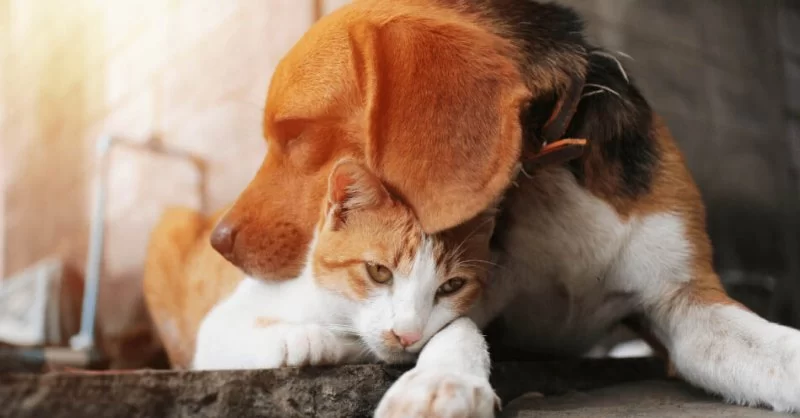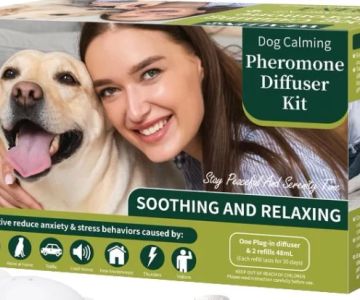Where to Find Pet Anxiety Therapy for Dogs and Cats
Many pet owners are unaware of the extent to which their dogs and cats can experience anxiety. Whether it’s separation anxiety, fear of loud noises, or stress from changes in the environment, pets can suffer just like humans. Fortunately, pet anxiety therapy has come a long way, offering a range of treatment options to help your furry companions feel more at ease. If you're wondering how to address your pet’s anxiety, this guide will help you navigate the various therapy options available for both dogs and cats.
1. Understanding Pet Anxiety
Pet anxiety is a common condition that affects many dogs and cats. It can manifest in various forms, including destructive behavior, excessive barking or meowing, hiding, and physical symptoms such as drooling or shaking. Pets can become anxious due to a variety of triggers, such as:
- Separation from their owner
- Changes in routine or environment
- Loud noises, such as thunderstorms or fireworks
- Visits to the vet or grooming appointments
- New people or pets entering the home
Understanding what triggers your pet’s anxiety is the first step in finding an effective solution. Luckily, there are various types of therapy designed to address these challenges.
2. Behavioral Therapy for Pets
One of the most effective ways to help pets manage anxiety is through behavioral therapy. Just like people, pets can benefit from learning new ways to cope with their feelings of stress and fear. Below are some common behavioral therapies used for dogs and cats with anxiety:
- Desensitization and Counter-Conditioning: This therapy involves gradually exposing pets to the anxiety-inducing stimulus in a controlled and calm environment. Over time, the pet learns to associate the previously stressful event with positive experiences, reducing their anxiety.
- Positive Reinforcement: Rewarding calm behavior with treats, praise, or playtime helps pets learn that staying calm is desirable. Positive reinforcement can be used in conjunction with other therapies.
- Crate Training (for Separation Anxiety): If your dog or cat experiences separation anxiety, crate training can provide a sense of security. Crates can become a safe space for pets to retreat to when feeling anxious, offering them comfort when their owner is away.
3. Medications for Pet Anxiety
In some cases, behavioral therapy alone may not be enough to manage severe anxiety. Veterinary professionals may recommend medications to help alleviate your pet's symptoms. There are a variety of medications available for both dogs and cats, including:
- Anti-Anxiety Medications: Drugs like fluoxetine (Prozac) or sertraline (Zoloft) can help regulate mood and alleviate anxiety in both dogs and cats. These medications are usually prescribed by a veterinarian after assessing your pet’s needs.
- Sedatives: For specific situations, such as trips to the vet or during a thunderstorm, sedatives may be prescribed to help calm your pet temporarily. These should only be used under veterinary supervision.
- Supplements: There are several over-the-counter supplements, like Adaptil (for dogs) or Feliway (for cats), that can help ease anxiety naturally. These products contain calming pheromones or herbs that can help your pet feel more relaxed.
4. Holistic and Natural Remedies
For pet owners who prefer natural alternatives, several holistic treatments can help alleviate anxiety in pets. These remedies may not work for every pet, but they can be worth exploring in addition to conventional therapies. Some popular holistic options include:
- Aromatherapy: Certain scents, like lavender and chamomile, can have calming effects on pets. Aromatherapy diffusers or sprays specifically designed for pets are available to help create a soothing environment.
- Acupuncture: Acupuncture has been shown to help relieve anxiety in both dogs and cats. It involves inserting thin needles at specific points on the body to stimulate nerves and improve energy flow, promoting relaxation.
- CBD Oil: Cannabidiol (CBD) oil is becoming increasingly popular for treating anxiety in pets. It is derived from hemp and has been shown to have calming effects without the psychoactive properties of THC. Always consult your vet before introducing CBD into your pet’s routine.
5. Where to Find Pet Anxiety Therapy
Finding the right therapy for your pet can take some time, but there are plenty of resources available. Here’s where you can start your search:
- Your Veterinarian: The first place to visit is your veterinarian. They can help diagnose the severity of your pet’s anxiety and recommend the best course of action. They may refer you to a pet behaviorist or suggest medications, depending on your pet’s needs.
- Animal Behaviorists: Certified animal behaviorists specialize in diagnosing and treating anxiety and behavioral issues in pets. They use techniques such as desensitization, positive reinforcement, and other proven methods to help pets cope with anxiety.
- Pet Trainers with a Focus on Anxiety: Some professional dog trainers specialize in training pets with anxiety. They work with owners to implement structured plans that help alleviate stress and improve the pet’s behavior.
- Online Resources and Virtual Consultations: If in-person visits aren’t feasible, many veterinarians and behaviorists offer virtual consultations. Additionally, online platforms like Hidden Brook Veterinary can connect you to online services for pet anxiety therapy.
6. Real-Life Example: Helping Max Overcome Separation Anxiety
Max, a 3-year-old Border Collie, struggled with separation anxiety whenever his owners left for work. He would bark uncontrollably, scratch at doors, and even refuse to eat. His family tried crate training, but nothing seemed to work. After consulting with a veterinary behaviorist, they implemented a combination of desensitization exercises and anti-anxiety medication. With patience and the right therapy, Max's anxiety significantly improved, and he became much calmer when left alone. His family could now enjoy their time away from home without worrying about his stress levels.
7. The Importance of Patience and Consistency
When dealing with pet anxiety, it’s important to remember that progress can be slow. Whether you're using behavioral techniques, medications, or holistic treatments, consistency is key. Work with your pet regularly and monitor their response to different therapies. Over time, with patience and care, many pets can overcome or manage their anxiety effectively.
If you’re looking for more information or need help with your pet's anxiety, visit Hidden Brook Veterinary for personalized recommendations and therapy options tailored to your pet’s needs.












